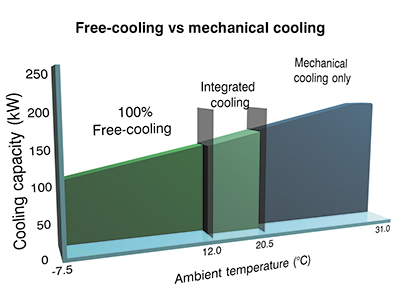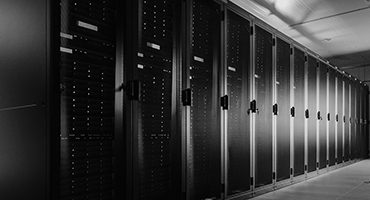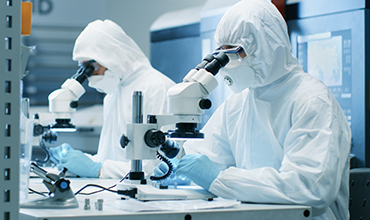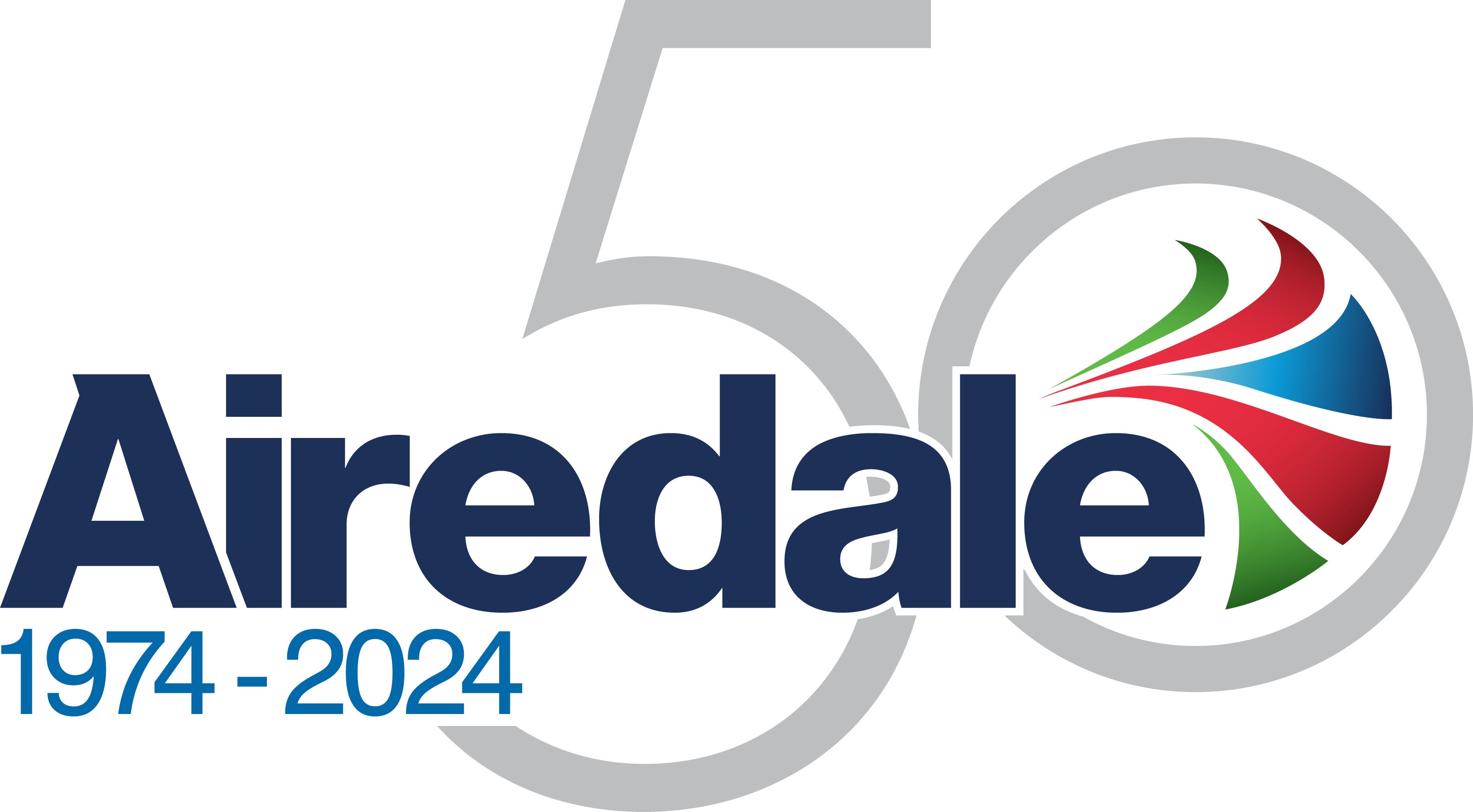Free Cooling
In addition to energy savings through reducing the need for mechanical (DX) cooling, concurrent free-cooling also maximises the part-load efficiencies of components.
What is free cooling and how can it reduce air conditioning operational costs?
The largest power draw on any cooling system is the compressor. Even slight reductions in compressor running time, operating capacity or operating conditions can have significant effects on the power consumption of the system.
Free cooling is the process of using external ambient temperature to reject heat, rather than using the refrigeration process. If used within an optimised system, free cooling can provide significant energy savings. It can take effect when the difference between the outside supply and return temperatures is as little as 1°C. This means that, in a 24/7 data centre with a typical room temperature of 24°C, over 95% of the year can be spent with free-cooling active.
To achieve free cooling within chiller plant, a free cooling water coil is usually fitted adjacent to the DX coil. The chiller monitors external ambient temperature, and once this falls below the return water temperature, the water is diverted to the free cooling coils in order to reduce or remove the mechanical cooling requirement.
Concurrent free cooling

Airedale pioneered the concept of ‘concurrent’ free cooling in data centres over 15 years ago. In addition to energy savings through reducing the need for mechanical (DX) cooling, concurrent free-cooling also maximises the part-load efficiencies of components such as EC fans, inverter-driven pumps and centrifugal compressors. The variable speed control on such components allows load to be very precisely matched to cooling duty, reducing energy consumption and unnecessary wear. EC fans for example are up to 70% more efficient than AC fans at part-load.
The use of temperature sensors and sequencer controls allows for cooling to be staged, ensuring a smooth transition from mechanical cooling to air free cooling. Airedale’s ACIS™ controls logic and sequence management, for example, can configure between two and six chillers to run as master/slave and run/standby. On sites with an air cooled and free cooling chiller, the sequencer ensures that when the ambient is low, the free cooling chiller is the first to start up.
In terms of the costs of ownership, energy represents by far the biggest item of expenditure, often outweighing the initial capital costs over the course of a unit’s lifetime; in the case of a traditional DX computer room air conditioning (CRAC) system, estimated energy costs over the course of five years can add up to 5 or 6 times the initial cost of the unit. Free cooling units can easily pay for themselves within the first 1 to 2 years and, by the end of five years, total costs of ownership can equate to around half those of DX systems. Free cooling opportunities can therefore make a significant saving on operational budgets, generating PUEs of 1.1 or below.
Reduced fan speeds
Energy can be reduced further by setting fans to operate at less than full capacity without compromising performance at full load; under Fan Affinity Law, a fan working at up to 80% of capacity for example will reduce energy consumption by up to 50% for the same performance.
Elevated supply and return temperatures
Raising supply and return temperatures for example to 24°C and 36°C respectively can also generate free cooling opportunities without compromising computer room functionality, still well within the ASHRAE (Class 1 & 2) recommended data centre upper operating temperature of 27°C (80.6°F).
Controls integration
Coupling a free cooling HVAC system with a comprehensive Building Management System (BMS) like the Airedale ACIS™ system, allows monitoring and management of HVAC, lighting and other power units across large sites. Along with live and historical data capture, ACIS™ goes beyond many other BMS offerings by deploying true HVAC optimisation, utilising our many years of experience in designing HVAC systems to automatically deploy optimised operating settings for equipment, maximising free cooling and reducing energy costs.
Contact Airedale for more information.

DATA CENTRE SOLUTIONS
Intelligent Cooling, Greener Data Centres

ENERGY & EFFICIENCY
At Airedale, we believe that efficiency should be driven, not by legislation, but by a genuine will to reduce air conditioning’s cost to our customers and the environment.

PRECISION AC PRODUCTS
Mission critical cooling has been Airedale’s core focus since 1974. Our range of precision air conditioning solutions have been designed for a wide range of applications where close control, high precision air conditioning is essential, including data centres (from single server rooms through to hyperscale), telecom switching stations, medical operating theatres and clean room environments.


